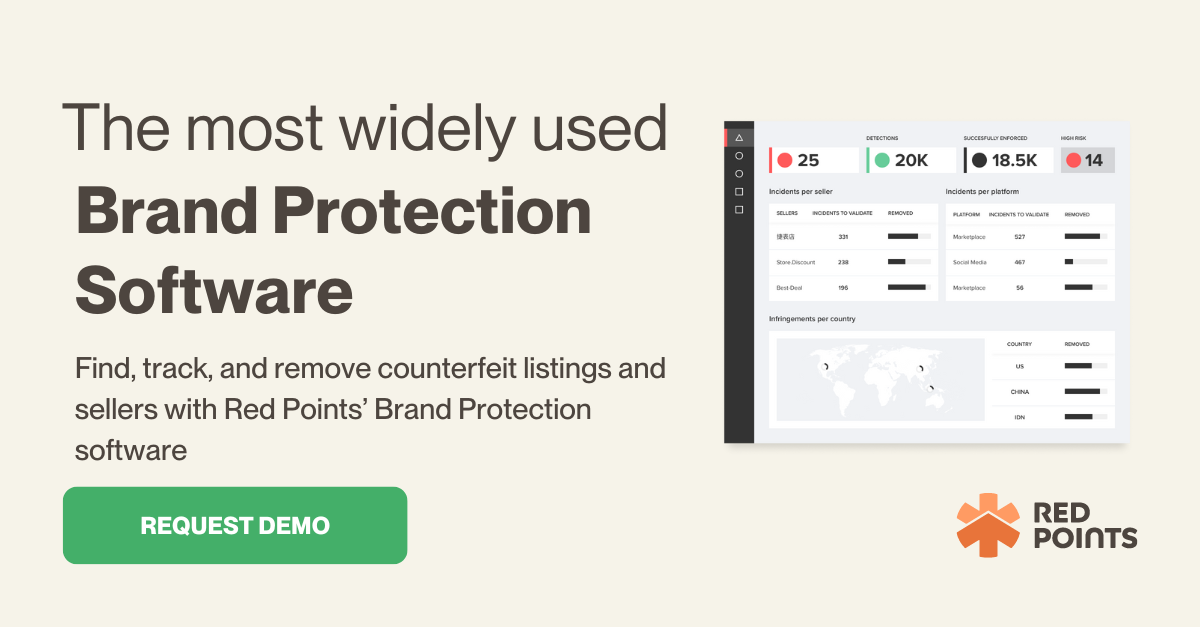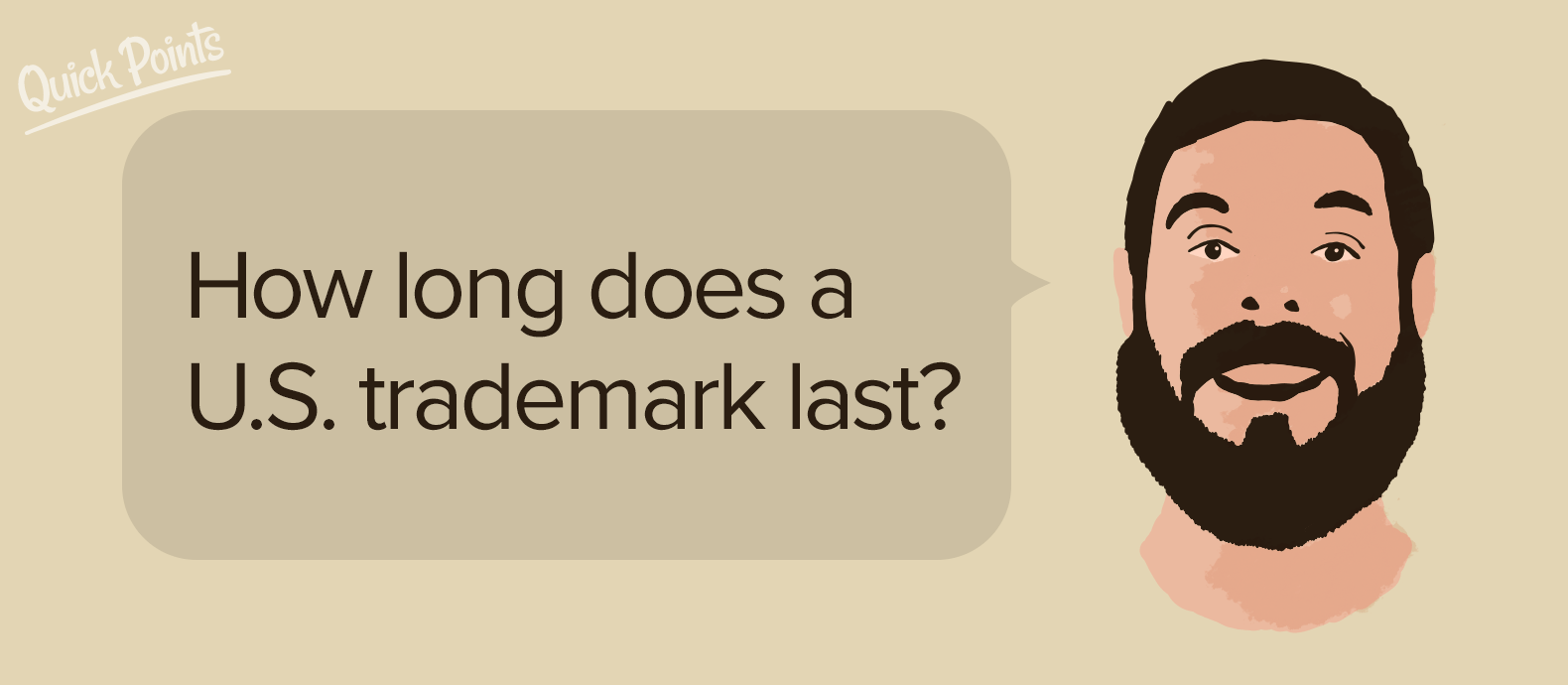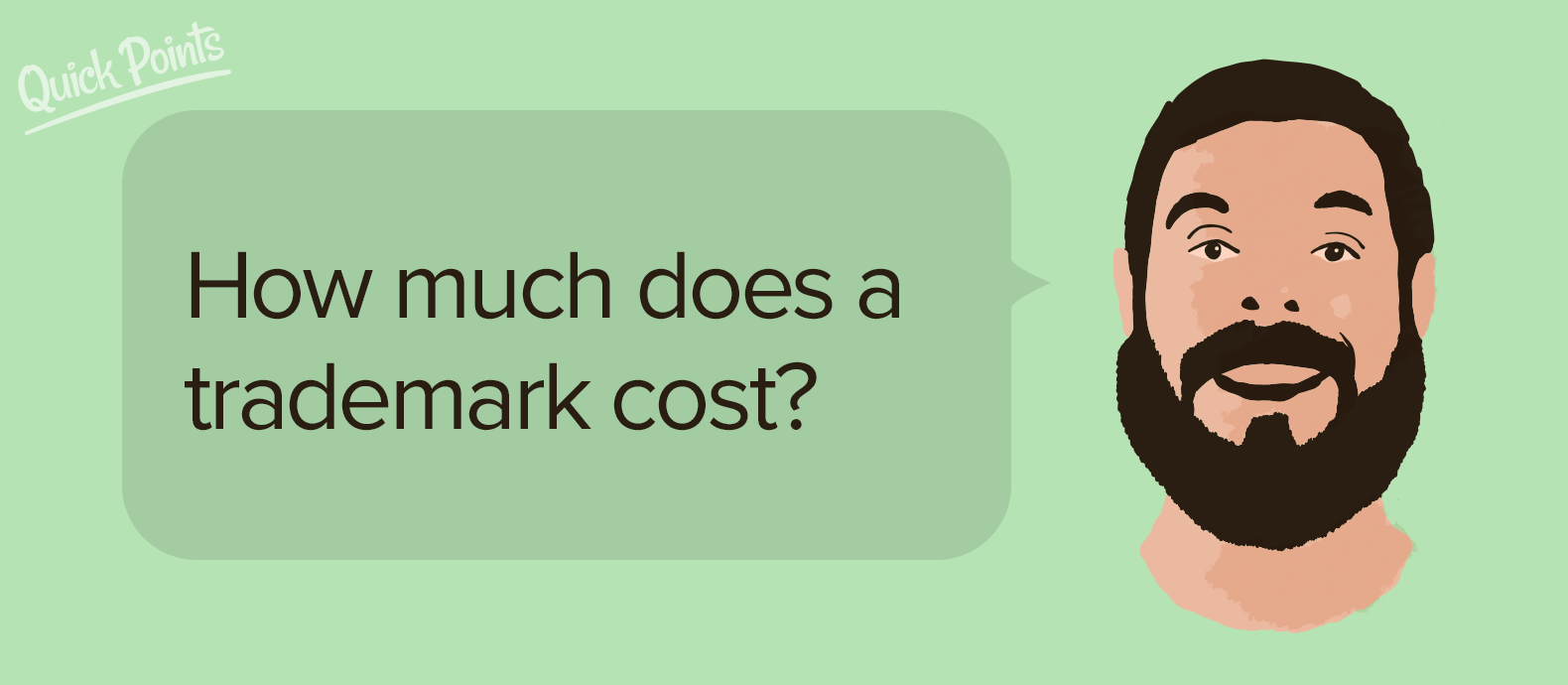Red Points’ comprehensive guide for helping brands worldwide to register their trademarks in the United States.
In this article, we will take a look at:
- A definition of trademarks
- The protections provided by trademark
- How to register a trademark
- The different levels and classes of trademark available
- Searching for existing trademarks
- The ways your trademark may be infringed
What are trademarks?
Trademarks are used to identify and guarantee a product or service as belonging to a particular company. They differentiate the trademarked product from all others, so consumers cannot be confused as to who is providing the product or service.
Ownership of a trademark does not grant ownership of the word of an image that is being trademarked. Instead, it provides the holder the exclusive right to use the mark on goods and services, and the ability to prevent others from doing so.
Trademarks exist in the form of:
- insignia
- phrases
- symbols
- designs
- letters
- the shape of goods and packaging.
- sounds, smells, colors, and shapes can even be trademarked in certain cases.
Service marks are the same as trademarks, except that they’re used to identify the provider of services, instead of a provider of goods.
If you are looking for lawful protection of works of art, audiovisual works, written works, computer programs or databases or adverts, then copyright is what you need, not a trademark. Check out Red Points’ Essential Guide to Copyright to learn more about this form of IP protection.
What does a trademark protect?
Trademarks generally offer protection only in the countries in which they are registered or used. For brands that intend to sell in multiple countries, trademark applications must be made in each of those countries. Even when not intending to sell in a given country, trademark registration is greatly recommended, as it’s the first necessary step to preventing counterfeiting.
How long does a trademark last?
Federal trademark rights last for ten years after filing. However, this can be renewed if the trademark is still being used to identify goods and services. There is no real expiration date for trademarks, differing them from IP rights like copyright and patents. This means a trademark can be renewed ad infinitum, so long as the holder continues to use the mark for commercial purposes for which it was originally registered.
How to get a trademark in the USA
Brands will be pleased to hear that a trademark can be applied online relatively quickly, and hiring a lawyer may not be necessary. By going to the USPTO website and filling out the relevant application forms, you can get your process of trademark registration started today.
During the application process, you’ll be asked to provide:
- Contact and address details for the mark owner
- Entity type of applicant (e.g. individual, corporation etc)
- The mark you intend to register, to be submitted as
- standard characters, if you are not claiming a particular font style, size, and/or color;
- a special form, if the mark includes a design or words combined with a design, or if it’s displayed in a particular font style, size, or color; or
- non-visual sound mark, to be submitted as a musical score, and an audio file, as well as a detailed mark description.
- the class of mark, form a list provided by the USPTO
You’ll also be requested to submit filing basis, selected from one of four types:
- Section 1 (a), for marks used in commerce now, which will require:
- a specimen displaying the use of the mark as it exists in commerce
- a description of the specimen
- The date of first use of the mark anywhere
- The date of first use of the mark in commerce
- Section 1 (b), for currently unused marks with intention of future use
- Section 44 (d), for marks with an existing foreign application for the same goods or services, which will require the following details:
- country of foreign filing
- Foreign application number
- Date of foreign filing
- Section 44 (e), for marks with an existing foreign registration for the same goods or services, which will require the following details:
- Country of foreign registration
- Foreign registration number
- Foreign registration date
- Date of foreign registration renewed (if applicable)
- Expiration date of foreign registration
- Registration / renewal / translation documentation, submitted to USPTO
How much does a trademark cost?
Applications to the United States Patent and Trademark Office (USPTO) cost from $225 to $400 per class of registered goods or services. The price depends on the type of application made to the USPTO, itself depending on the amount of information provided by the registrant.
How long does it take to get a trademark?
Once you are certain that your trademark is ready for submission, and does not conflict with other existing trademarks, the application can be submitted. The entire process will likely take around a year.
To start off, applicants can expect to wait three to four months before the application is picked up by USPTO.
At this point, the application is handed to an examining attorney working for USPTO, and is likely to remain here for another six months or so. If the examining attorney identifies no potential conflicts then the application will move to the publication stage.
From here, there is a 30-day grace period in which the mark is announced publically and any third party may make objections. If no objections are made, then USPTO will move onto certifying the registration. This will likely take another two or three months.
The short answer is approximately a year, depending on a number of factors. Gerben Law Firm PLLC have an in-depth explanation of the timeline of trademark registrations.
Can I register multiple trademarks at once?
While no single registration exists that can provide worldwide protection of trademark, the simplest and most effective way of registering a trademark across a large range of countries is by taking advantage of the Madrid System. 130 countries have signed up to this agreement, which provides a cost-effective and streamlined method of mass-registering trademarks. A full list of Madrid Agreement countries is made available here by the World Intellectual Property Organisation (WIPO).
Trademark symbols
™ is the commonly-used symbol for unregistered trademarks and SM (a superscript SM) denotes an unregistered service mark. Neither symbol signifies ownership in a legal sense, but are used to demonstrate a claim to ownership. The symbols are used once a company begins using the mark in commerce to give notice to others of intent to register in the future.
® is the symbol used to denote a registered trademark. It is used to demonstrate that the trademark has been registered federally and that official bodies have authorised the registration. Incorrect use of the ® symbol could be considered fraud.
How to type a trademark symbol
- For the trademark (™) symbol, type 0153 on the keypad while holding the ALT key,
- For the registered trademark (®) symbol, type 0174 while holding the ALT key,
- Service mark can’t be so easily created. To create it, simply superscript the letters SM (like this: SM)
Types of trademarks
Fanciful marks
The strongest and most distinctive type of trademark is the fanciful mark, also referred to as “coined mark”. Fanciful marks are those that have no significance outside of the product they represent, meaning they have been created for the purpose of the business, and won’t be found if looked up in a dictionary.
e.g. “Kodak” photography and technology
Arbitrary marks
After fanciful marks, the strongest protection is granted to arbitrary marks. These are made with pre-existing words, but ones which are totally unrelated to the goods provided.
e.g. “Apple” computers
Suggestive marks
Suggestive marks are those that hint at the product being offered, without making explicit reference of descriptions of the product. The consumer is required to use some imagination in order to connect the name to the product offered, but a link does exist. Suggestive marks are considered to have strong protections.
e.g. “Microsoft” for software for “micro-computers”
Descriptive marks
The first mark to be considered “weak”, descriptive marks use a name that describes the products. With descriptive marks, consumers can look at the name and already know what the product being offered is.
They cannot be registered as a trademark if the words have a single meaning, though registration may be granted when the words acquire a secondary meaning, or “acquired distinctiveness”. Secondary meaning attaches when consumers associate the mark with the brand, as a source indicator. Generally, evidence of secondary refers to the length and manner of use of the mark, whether the use is exclusive, the volume of sales or number of customers, the extent of advertising, and consumer surveys indicating that the average consumer associates the mark with its source.
Personal names, geographic names, and symbols (Louboutin’s red soles) also need secondary meaning to be registered.
e.g. “QuickPrint copy shops” for copy shops
Generic marks
The weakest type of mark is the generic mark. These are never registrable or enforceable as intellectual property. A generic mark is a mark that is being used to identify the class of products instead of the source or brand name for the product. Some marks may start out fanciful, arbitrary, suggestive, or descriptive marks but may become generic over time.
For example, in the Thermos and Teflon cases, the courts considered what was the primary significance of the registered mark to the relevant public through surveys evaluating public use (how/what would you ask for, or brand name/ common name questions) to evaluate whether the trademarks Thermos and Teflon had become generic.
In the Asprin case, the competitor’s and Bayer’s own use of the trademark Asprin mark as a noun was considered to be evidence of genericide. Other uses, such as dictionary use or media use, may also be considered in evaluating genericism. Because the link is so clear and direct, generic marks are used to identify a class of products, any company is allowed to use them, but none are granted ownership over the IP.
e.g. “Xerox” machine for photocopy machines
Trade dress
Trade dress refers to a specific application of trademark. It is used to defend the visual appearance of a product or packaging, and signifies to consumers that it is manufactured by a specific company.
While product packaging can be inherently distinctive (Two Pesos), product design cannot be and thus needs secondary meaning (Samara Brothers). For trade dresses, some courts apply the Seabrook test instead to determine whether the trade dress is inherently distinctive. Under the Seabrook test, to determine whether the trade dress is inherently distinctive or merely ornamentation the following factors are considered:
-
whether the mark is a common basic shape or design;
-
whether it is unique or unusual in the particular field;
-
whether it is a mere refinement of a commonly adopted and well-known form of ornamentation for the class of goods viewed by the public as ornamentation for the goods;
-
whether capable of creating a commercial impression distinct from the accompanying words.
e.g. The Coca-Cola bottle
Trademark classes
The European Union adheres to the Nice Classifications for trademarks, of which there are are 45 classes in total, 34 for products and 11 for services. The United States also uses the Nice Classifications, but classes are further divided into more specific classifications of goods and services. The USPTO has made available a full searchable database for trademark classes here.
Section 8 trademark Declaration
After five years of continuous use of a registered trademark, the USPTO requires that a declaration be submitted to show that the mark is still being used in commerce. This must be submitted between the fifth and sixth anniversary of the original trademark registration.
Failure to file a Section 8 Declaration after five years will result in the loss of the trademark registration.
Filing a Section 8 Declaration
To make this mid-term trademark registration, visit the USPTO Registration Maintenance/Renewal/Correction Forms page.
How to search trademarks
Before considering registration, it is imperative to first search the other existing trademarks registered. WIPO provides a free-to-use online database for searching trademarks from many international sources. This Global Brand Database is available here. WIPO also provides
When you apply to register a trademark, the office will first perform a search to see if there are any current trademarks with which yours could be confused by consumers. It’s then recommended to design a trademark which is clearly distinctive to others in the market. The different types of trademarks are listed above.
What is trademark infringement?
There are a number of different forms of trademark infringement, and it’s important to be aware of the differences if you are a brand owner. To successfully sue a competitor or counterfeiter for trademark infringement in court, the trademark owner would have to:
-
demonstrate that they have a valid mark protecting their brand name, logo, product packaging, or product design, and
-
show that the infringing mark is likely to cause confusion with their own mark in the minds of reasonable consumers.
Courts consider the following Sleekcraft eight factors when determining whether the infringing mark is likely to cause confusion:
-
the strength of the mark;
-
the proximity of the goods;
-
the similarity of the marks;
-
evidence of actual confusion;
-
marketing channels used;
-
the type of goods and the degree of care likely to be exercised by the purchaser;
-
alleged infringer’s intent in selecting the mark; and
-
likelihood of expansion of the product lines.
Brand Abuse
Exploiting a brand through different forms of IP violations (counterfeiting; cybersquatting; trademark, copyright, and patent infringements) in order to profit illegally from it or damage its reputation.
Counterfeit
A product that intends to imitate a genuine brand, using its logo and design without their permission, in order to deceive the customer and lure them into buying it.
Cybersquatting
Registering or using an internet domain name with bad-faith intent to profit from the goodwill of a trademark belonging to someone else.
Replica
Easy to confuse with trademark infringement, a replica product is one that copies the look or the design of an existing product, without infringing on its trademarked name or logo.








